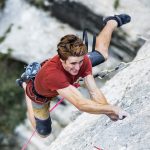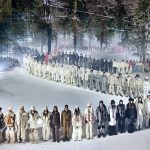In 2009, American participation in outdoor recreation was marked by encouraging growth in important segments of core outdoor activities, according to a new report, Outdoor Recreation Participation Top Line Report for 2010, released Friday by Outdoor Foundation. The 2010 Topline Report details recent participation trends in outdoor recreation for Americans ages six and older and illustrates ongoing adjustments in American lifestyles brought about by the challenging economy and changing demographics.
Initial data from the study shows that general participation in “core” outdoor sports and activities increased three (3.3%) percent to nearly one hundred (100.7%) million participants. Cost-effective categories continued with strong increases. Those activities that can be “done in a day” and fit in with busy schedules continued to post increases in activity: camping, hiking, running and bicycling.
The economy in 2009 had a major impact on spending in sports, fitness and recreation. Only more than four (4.5%) percent of active participants said they had spent more than in 2008, with the biggest decreases coming from equipment and travel. However, looking forward to 2010, there are positive signs with significant numbers of respondents set to increase spending in those categories.
“We see the economy driving people back to nature. This has tremendous implications for health and wellness issues surrounding the sharp increases in childhood obesity,” said Christine Fanning, Executive Director of Outdoor Foundation. “Outdoor recreation is finally being recognized as part of the solution. Our position is that nature should be the first prescription.”
Overall activity levels illustrates that while seventy-seven (77%) percent of Americans age six and over took part in at least one activity that left sixty-four million people who are inactive. Over fifty (50%) percent of Americans take part in no activities at all or are infrequent participants.
The study also shows that activities at school age have shown to be a major factor in determining future outdoor recreation participant levels. While three quarters of respondents took part in physical education (PE) at school, just over a third took part in outdoor activities. PE at school continues to be a pathway to an active adulthood.
With the vital outdoor recreational information detailed within the study, Outdoor Foundation provides youth organizations, public agencies, businesses and non-profits with insights needed to increase outdoor participation. Effective outreach programs and creative campaigns must be top priorities for every sector of society if we are to inspire and grow the next generation of outdoor enthusiasts.
“While it is certainly encouraging to see an increase in participation in some important recreation categories, more must be done to help youth reclaim, redefine and rediscover the outdoors,” continued Fanning, noting that it's been four years since the Richard Louv's seminal book “Last Child in the Woods” was published. “Our new program, Outdoor Nation, and our first Youth Summit in New York in June is a way for CEOs to start thinking about investing in the next generation of outdoor industry executives and launching programs to support youth in the outdoors.”
Outdoor Foundation's 2010 Outdoor Recreation Participation Topline Report details Americans' participation in outdoor activities from 2008 to 2009. The Report is a high level overview of The Foundation's full Participation Report, which will be released later this year with expanded data and full analysis.
Outdoor Foundation's Outdoor Recreation Participation Report is the only detailed study of its kind tracking American participation trends in outdoor recreation. The study is based on an on-line survey capturing responses from over forty thousand (40,000) Americans ages six and older and covers a variety of outdoor activities.
A copy of the 2010 Outdoor Recreation Participation Topline Report along with the 2009 Outdoor Recreation Participation Report can be downloaded from Outdoor Foundation website at http://www.outdoorfoundation.org/research















